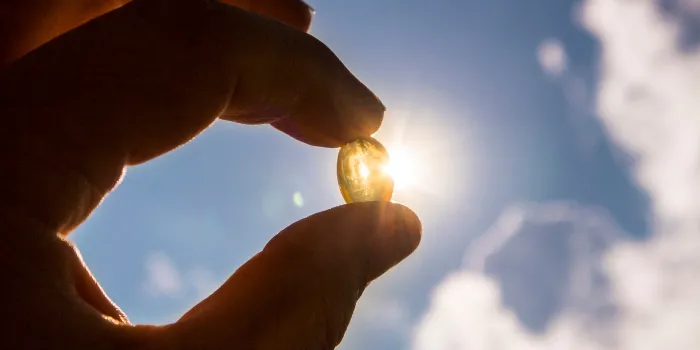Among the many challenges brought on by the COVID-19 pandemic is finding ways to get enough vitamin D. Many of us are cooped up in our homes, and simple outdoor activities—taking a walk down a busy street or sitting outside at a restaurant with friends—now come with a certain level of risk.
It may seem insignificant, but a lack of vitamin D is not to be ignored. Not only is vitamin D helpful in warding off COVID-19, it also can help limit the reduction of bone density, which is especially crucial for members of the bleeding disorders community.
What can you do to get the vitamin D you need? There are a few lifestyle changes you can make. First, let’s take a look at how much the vitamin really matters to your health.
The Benefits of Vitamin D
Beyond COVID-19, vitamin D can help fight critical illnesses such as multiple sclerosis, heart disease, cancer and diabetes. It can also help control infections and reduce inflammation. And what makes it so effective in limiting the loss of bone density is that it helps the body absorb and retain calcium and phosphorus, both critical for building bone.
Not only does it help in the long term with major diseases and physical ailments, vitamin D also contributes to your mental health, as proper vitamin D levels have been associated with improved mood and reduction in symptoms of depression.
How to Get Vitamin D
There are several ways to get the right amount of vitamin D, but it’s important to remember that everyone’s needs are different. Certain factors such as where you live, your age, weight and skin color determine your ability to get and produce vitamin D. Consider these variables before you make any lifestyle changes, and consult with your doctor to determine how much more vitamin D you need and what vitamin-boosting methods best fit your situation.
Foods That Are High in Vitamin D
You can adjust your eating habits to include more healthy options that pack a punch of vitamin D. Fish—such as salmon, tuna and mackerel—is an excellent source of vitamin D, and to a lesser extent so are beef liver and egg yolks. Some mushrooms that have been exposed to ultraviolet light also provide a vitamin D boost. Fortified foods such as milk, orange juice and breakfast cereals contain vitamin D as well.
Supplements
Even with a good diet and adequate exposure to the sun, many people still don’t get enough vitamin D. In these situations, supplements can help pick up the slack.
There are two forms of vitamin D supplements: vitamin D2 (ergocalciferol) and vitamin D3 (cholecalciferol). Vitamin D2 is available through prescription (at high doses) or over the counter and is used to treat conditions like hypoparathyroidism, rickets or low levels of phosphate in the blood. Most doses of vitamin D3 are available over the counter and are used to address a vitamin deficiency—so D3 is likely the right choice for you.
Spend Time in the Sunlight
Though it’s more difficult in 2020, it is worth seeking out safe opportunities to get outside. Do you have a private deck or balcony? Is there a large park close by? Finding places such as these to spend time in the sun is one of the best ways to get vitamin D.
Just remember that the effectiveness of the sun’s rays depends on factors such as location, time of day (midday is when the sun is strongest) and the color of your skin—higher levels of melanin better protect the skin from ultraviolet rays, which inhibits the body’s production of vitamin D. With that in mind, how long you should be exposed to the sun’s rays will vary, but 10 to 30 minutes a day is the general recommendation.

